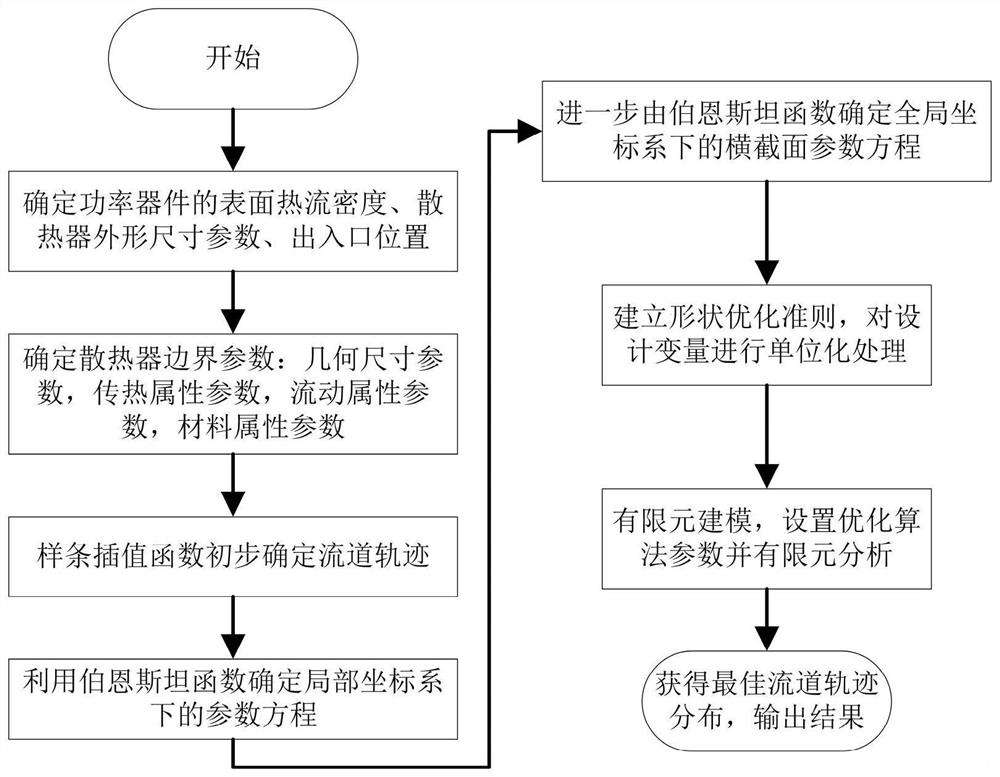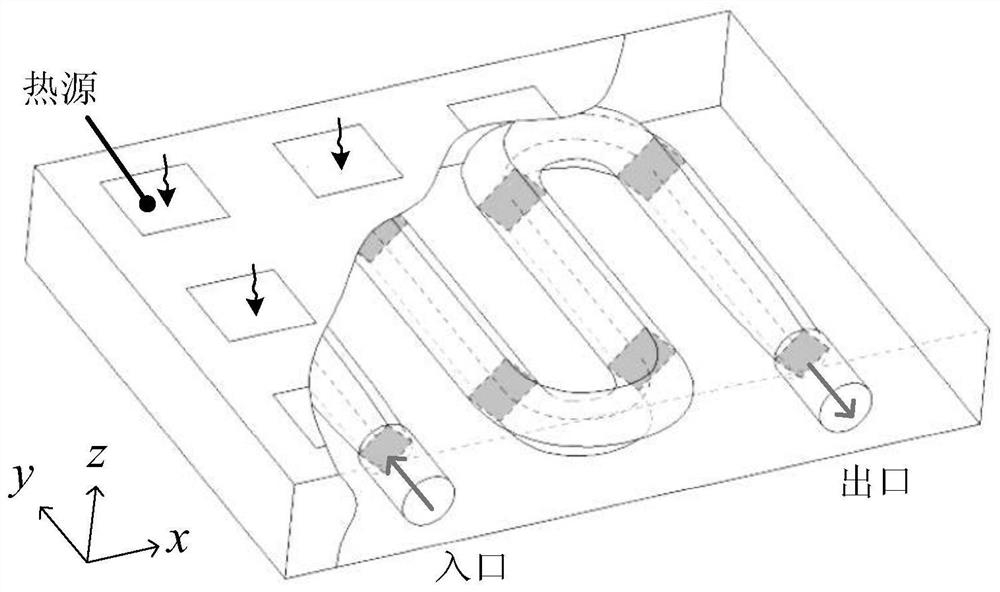Optimal design method of conjugate heat transfer radiator with variable cross-section runner
An optimized design and radiator technology, applied in design optimization/simulation, computer-aided design, instrumentation, etc., to achieve the effect of reducing design variables, reliable temperature distribution, and beneficial to engineering practice
- Summary
- Abstract
- Description
- Claims
- Application Information
AI Technical Summary
Problems solved by technology
Method used
Image
Examples
Embodiment Construction
[0040] The present invention will be described in detail below in conjunction with the accompanying drawings and specific embodiments, where the schematic embodiments and descriptions of the present invention are used to explain the present invention, but are not intended to limit the present invention.
[0041] Reference attached figure 1 As shown, for an optimal design method of conjugate heat transfer radiator with variable cross-section flow channel, the specific steps are as follows:
[0042] ·Step 1, determine the surface heat flux density of the power device, the overall size of the radiator and the position of the inlet and outlet of the flow channel
[0043] Determine the surface heat flux Q of power devices according to the configuration of on-site electronic equipment real ;Dimension parameters of the radiator: length L, width W, height H; the position of the entrance and exit, such as figure 2 shown.
[0044] · Step 2, determine the radiator boundary parameters...
PUM
 Login to View More
Login to View More Abstract
Description
Claims
Application Information
 Login to View More
Login to View More - R&D
- Intellectual Property
- Life Sciences
- Materials
- Tech Scout
- Unparalleled Data Quality
- Higher Quality Content
- 60% Fewer Hallucinations
Browse by: Latest US Patents, China's latest patents, Technical Efficacy Thesaurus, Application Domain, Technology Topic, Popular Technical Reports.
© 2025 PatSnap. All rights reserved.Legal|Privacy policy|Modern Slavery Act Transparency Statement|Sitemap|About US| Contact US: help@patsnap.com



